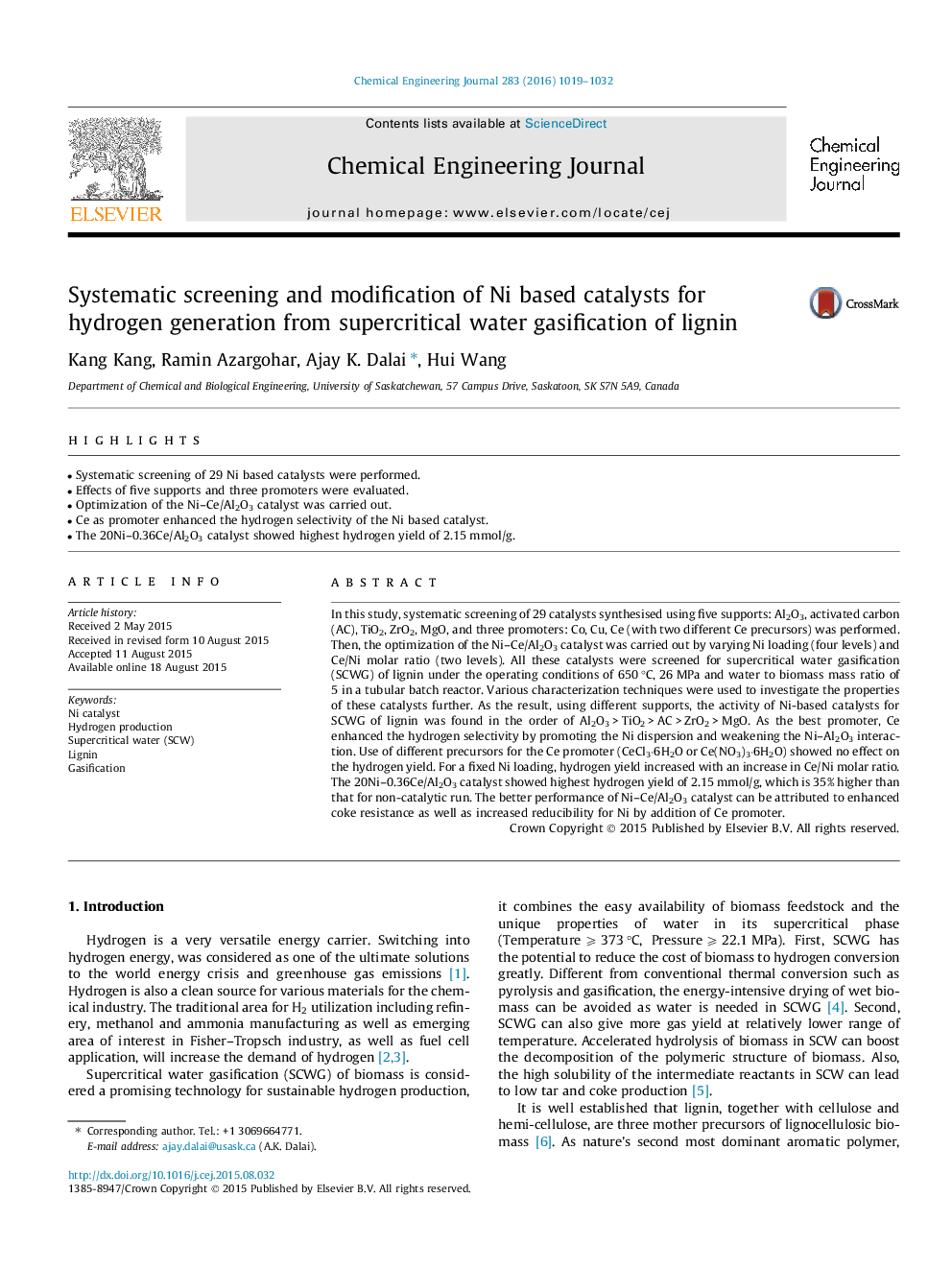| Article ID | Journal | Published Year | Pages | File Type |
|---|---|---|---|---|
| 6583897 | Chemical Engineering Journal | 2016 | 14 Pages |
Abstract
In this study, systematic screening of 29 catalysts synthesised using five supports: Al2O3, activated carbon (AC), TiO2, ZrO2, MgO, and three promoters: Co, Cu, Ce (with two different Ce precursors) was performed. Then, the optimization of the Ni-Ce/Al2O3 catalyst was carried out by varying Ni loading (four levels) and Ce/Ni molar ratio (two levels). All these catalysts were screened for supercritical water gasification (SCWG) of lignin under the operating conditions of 650 °C, 26 MPa and water to biomass mass ratio of 5 in a tubular batch reactor. Various characterization techniques were used to investigate the properties of these catalysts further. As the result, using different supports, the activity of Ni-based catalysts for SCWG of lignin was found in the order of Al2O3 > TiO2 > AC > ZrO2 > MgO. As the best promoter, Ce enhanced the hydrogen selectivity by promoting the Ni dispersion and weakening the Ni-Al2O3 interaction. Use of different precursors for the Ce promoter (CeCl3·6H2O or Ce(NO3)3·6H2O) showed no effect on the hydrogen yield. For a fixed Ni loading, hydrogen yield increased with an increase in Ce/Ni molar ratio. The 20Ni-0.36Ce/Al2O3 catalyst showed highest hydrogen yield of 2.15 mmol/g, which is 35% higher than that for non-catalytic run. The better performance of Ni-Ce/Al2O3 catalyst can be attributed to enhanced coke resistance as well as increased reducibility for Ni by addition of Ce promoter.
Related Topics
Physical Sciences and Engineering
Chemical Engineering
Chemical Engineering (General)
Authors
Kang Kang, Ramin Azargohar, Ajay K. Dalai, Hui Wang,
